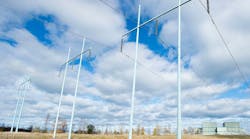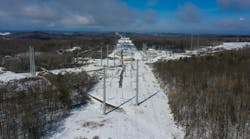A controversial, indeed much bashed, energy pricing mechanism for New York's Lower Hudson Valley is improving the region's electrical reliability and stimulating large-capital investments that will benefit the region for years to come.
At issue is the Lower Hudson Valley Capacity Zone. Following a lengthy and protracted process that began in 2007, the Federal Energy Regulatory Commission (FERC) determined that, because of persistent reliability challenges and a lack of power plants in the region, pricing incentives were needed to attract investments in new electricity sources. On May 1, 2014, the new pricing mechanism went into effect.
The central aim of the capacity zone proposal - to stimulate more power production in the region - is on course. The Bowline and Danskammer power plants are two significant power producers in the region that are being repowered, or modernized, as we speak. For years, both plants have been producing very limited power.
The non-profit operator of New York's electric grid, the New York Independent System Operator (NYISO), estimates that higher output from these and other plants will produce $400 million in savings for residents and businesses in 2015 alone.
Both power plants must still contend with regulatory reviews to ensure they meet the state's rigorous environmental standards. And, to be sure, they should not receive exemptions or special treatment as part of the regulatory review process.
The New York Public Service Commission estimated that the capacity zone pricing mechanism will increase consumers' bills by five to ten percent. It is important to keep in mind, though, that these price increases are designed to be temporary. They are also designed to lessen the likelihood of blackouts, whose costs can be enormous in terms of lost food, lost business, and even public safety.
NYISO's projection for $400 million in 2015 savings seems at odds with assertions by Central Hudson on its website that the capacity zone has raised electric costs for residents and businesses by as much as $99 million per year starting in May 2014. In fact, Central Hudson also notes on its website that the supply charge for residential electricity has actually fallen by 13 percent from April 2014 to February 2015.
The way to lower New Yorkers' electricity bills immediately and significantly is for politicians, including many who have criticized the capacity zone proposal, to cut the vast number of electricity taxes in New York State, which account for 25 percent of a typical customer's bill.
This includes the 18-a fee, a measure put in place to address the 2009 fiscal crisis, and a two percent general receipts tax. Electricity taxes are by nature regressive and most harmful to the poor.
The New York Independent System Operator (NYISO) estimates that 4,700 of the 11,000 circuit miles of transmission lines in the state will need to be replaced in the next thirty years. As such, there is a lot of competition, and investment alternatives, for new transmission lines in New York which can also reduce power costs.
It is imperative that the state continues to work to attract new market-competitive transmission proposals without providing any direct or indirect subsidies to these projects. Such costs, whether in the form of direct, indirect or opaque charges, fall on the backs of energy consumers and drive costs higher because they are ultimately anti-competitive.
The expanded local energy production that results from the Lower Hudson Valley capacity zone means an increase in supply and reliability for the downstate region for the long term. This capacity has set the region on the right path of encouraging new private investments in infrastructure and leading us to a reliable energy future.
The bottom line is that the capacity zone is working as expected and bringing benefits to the region.


